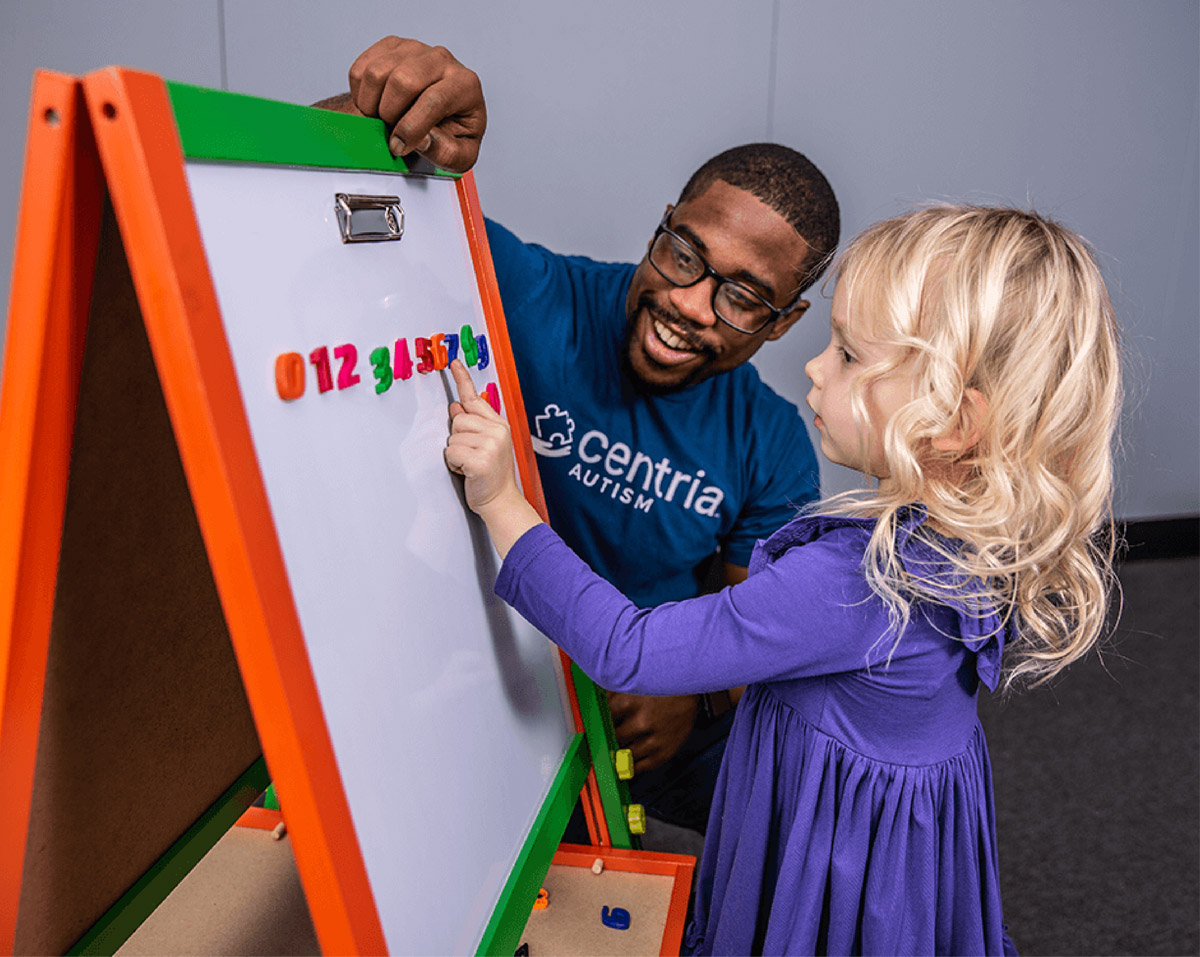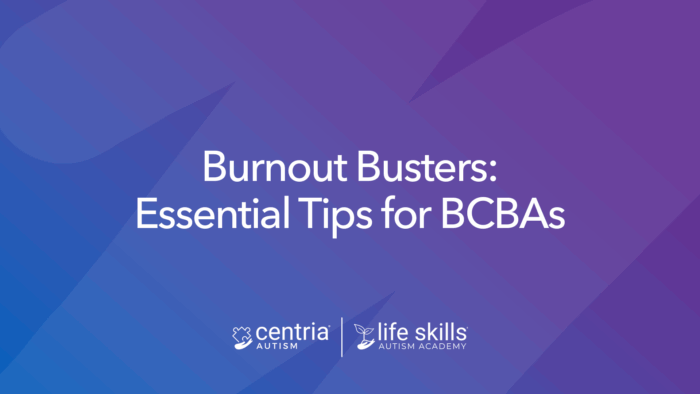Successful autism services focus on teaching helpful skills and creating supportive settings rather than just stopping challenging behaviors. At Centria Autism, we’ve created “The Foundational 5” – key ideas that guide how our staff works with your child. These principles help us maintain dignity, trust, and safety while teaching important skills. This guide explains these principles and how they make therapy better for your child.
Understanding The Foundational 5

1. Identify & Support HRE (Happy, Relaxed, Engaged)
Your child’s emotional state is our starting point and priority. We believe therapy works best when children feel happy, relaxed, and engaged. Our technicians are trained to:
- Observe what brings joy and comfort specifically to your child
- Create environments where your child can freely enjoy their interests
- Use this positive emotional state as both a foundation and goal throughout therapy
- Recognize your child’s unique signals of comfort and discomfort
- Prioritize their emotional well-being in all interactions
What this means for you: Our staff will work to learn what makes your child happy and comfortable. They make sure your child’s favorite toys and activities are easy to reach and available. When your child seems upset, our staff first helps them feel happy and calm again before going back to learning activities.
2. Validate Emotions
Emotional validation is so important for building trust and connection. Our approach includes:
- Showing complete acceptance and support of your child, regardless of behavior
- Following your child’s interests and motivations
- Creating environments where preferred items and activities are freely available
- Maintaining a calm, friendly presence that follows your child’s lead
- Genuinely acknowledging and empathizing with your child’s feelings, especially during challenging moments
What this means for you: Our staff are always seeking to understand when your child feels happy, sad, or angry. When your child is upset, we won’t ignore their feelings. Instead, we might say, “I can see you’re frustrated” or “This seems hard for you.” When we show support for their feelings and emotions, your child is more likely to feel understood and trust us.
3. Maintain Kind Boundaries
Sometimes, we must set limits to ensure safety and appropriate behavior. When this happens, our staff:
- Set firm but kind boundaries using the STEAM approach:
- Set a firm but kind boundary
- Tact (label) what’s happening
- Empathize and validate feelings
- Allow non-judgmental time for processing
- Move on when the child is ready
- Treat your child with respect even when you need to say “no.”
- Say yes when you can, and no when you have to.
- Focus on setting boundaries around the big things (health and safety)
- Example: Do not make “cleaning up” a boundary, but you can have “can’t climb on the table to touch the ceiling fan” a boundary.
- Offer different activities and rewards after setting a boundary.
What this means for you: When we need to set boundaries (like stopping unsafe actions), our staff stays kind and respectful. We don’t force your child to hurry past their feelings but help them while keeping important rules. You’ll see less fighting over who’s in charge and more working together to solve problems.
Check out this link for some supporting information.
4. Encourage Persistence
Finding the right balance between supporting your child and encouraging growth requires careful judgment. Our technicians are trained to:
- Know when to push forward with hard tasks and when to make things easier
- Give your child just enough help so they can succeed
- Praise your child for trying hard, not just for winning or finishing
- Choose learning activities that fit how your child feels at that moment
- Watch for signs your child is getting upset and make changes when needed
What this means for you: Our staff will challenge your child in thoughtful ways while paying attention to what they need. They’ll help when your child needs it but also let them do things on their own. Instead of forcing your child when they resist, staff will change how they work based on how your child is responding and what they can handle in that moment.
5. Embrace Reflection
Continuous improvement is essential to effective therapy. Our staff regularly:
- Look at their work and think about what’s helping or not helping
- Ask supervisors, coworkers, and families for feedback
- Value what you have to say as very important to therapy
- Change methods based on how your child responds and improves
- Team up with everyone to support what your child needs and wants
What this means for you: Our staff will often ask you what you notice and worry about. They’ll listen to your feedback and change how they work based on what you see at home. You’ll be treated as an important team member whose thoughts really help your child’s progress.
How The Foundational 5 Benefits Your Child
This assent-based approach offers several important benefits:
- Builds trust: By focusing on your child’s feelings and respecting their choices, we create better relationships.
- Reduces challenging behaviors: When children feel understood and respected, they often feel less frustrated and worried, so they act out less.
- Promotes skill development: Children learn best when they feel safe and interested. Our approach creates the right conditions for learning and growing.
- Supports generalization: The skills your child learns this way are more likely to be used in other places because they come from your child wanting to learn, not just following rules.
- Honors dignity: Most importantly, this approach respects your child’s value and right to have a say in their own care.
RELATED BLOG: The Effect of Assent-Based Care in ABA Therapy
How You Can Support The Foundational 5 at Home
It helps when our staff uses these ideas during therapy and when you use them at home too. Here are some ways you can use these same approaches at home:
- Notice and nurture HRE: Watch for what makes your child happy, relaxed, and engaged. Create chances for these good feelings throughout the day.
- Validate emotions: Show you understand your child’s feelings, even hard ones. Use simple words like “I see you’re feeling frustrated” to show you understand.
- Set kind boundaries: When you need to set limits, use the STEAM approach to be respectful while keeping everyone safe.
- Balance support and challenge: Find ways to help your child do things on their own while giving just enough help for them to succeed.
- Reflect and adjust: Pay attention to what works and what doesn’t, and be ready to try different ways based on how your child responds.
We want to work with you to help your child grow. If you have questions about how we use these ideas or how you can use them at home, please ask your child’s clinical team anytime.
About the Author
Brittany Bauerle is a Board Certified Behavior Analyst with a master’s degree in Education, specializing in Early Childhood and Autism. With over 18 years of experience in homes, clinics, schools, and communities, Brit has worked with individuals across a broad range of diagnoses, neurodiversities, and age groups.
Currently, Brit serves as the Director of Functional Assessment and Treatment Implementation for Centria’s West Market, supporting directors and clinicians across Oregon, California, Texas, New Mexico, and Arizona. Her passion lies in mentorship and clinical leadership, especially when it comes to Practical Functional Assessment (PFA), Skills-Based Treatment (SBT), and navigating complex cases.
Brit is deeply committed to assent-based care and ensuring ethical, compassionate, and client-centered practices are the standard, not the exception in our field. She’s proud to help lead a company-wide shift toward more humane, effective, and values-driven ABA practices. Her goal? To empower clinicians and disseminate these practices far and wide, driving meaningful change across the entire field of ABA.





